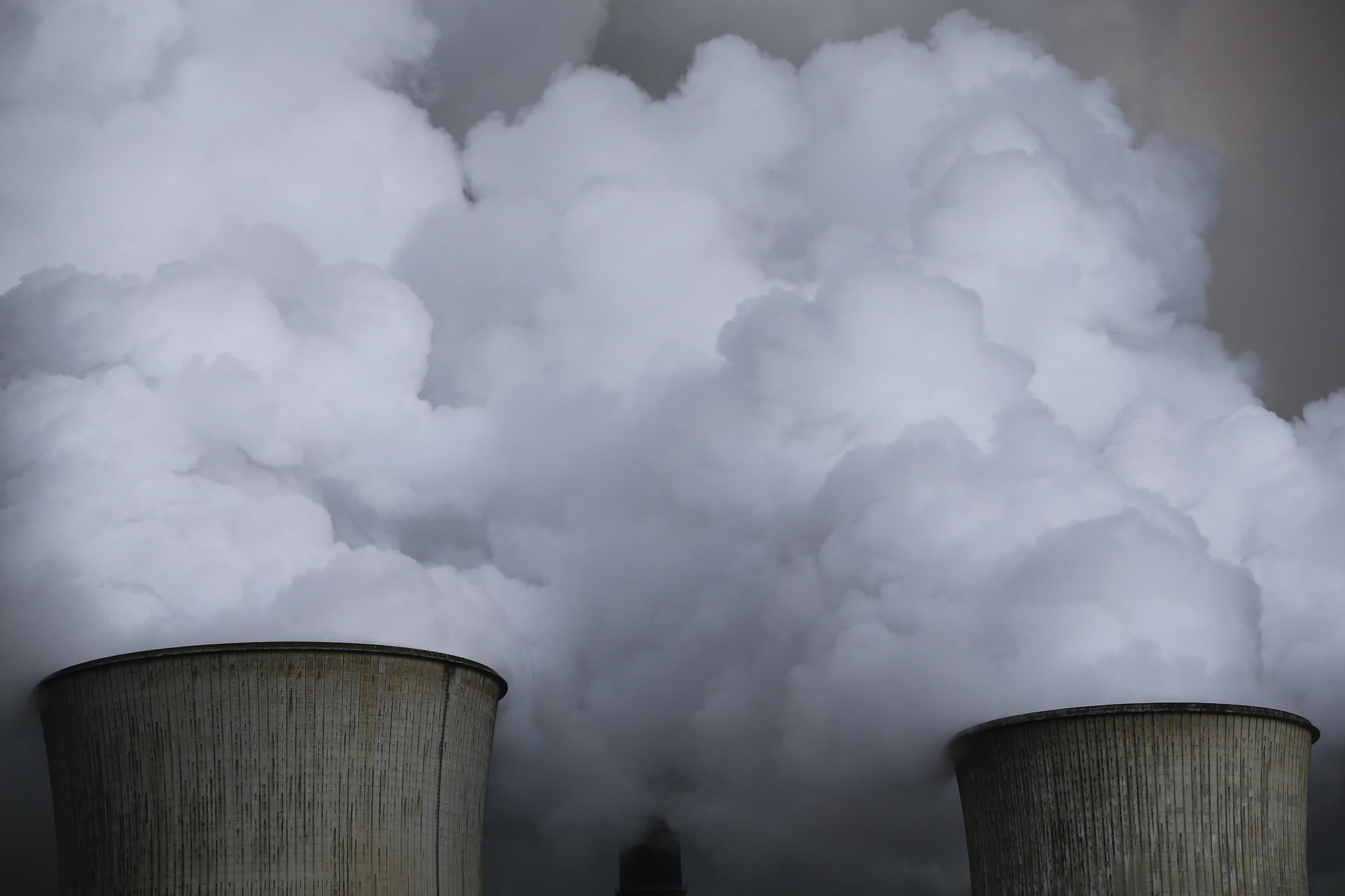Donald Trump may have found a way to save coal
Falling costs for renewable energy may not be enough to keep solar and wind energy thriving under President Trump

American President Donald Trump may soon have a chance to prove wrong the notion that economics will kill the US coal industry and keep clean energy thriving.
Two initiatives pending in Washington – one to prop up large traditional power plants and a second to impose tariffs on solar panels – could let Mr Trump upend wholesale electricity markets and tip the advantage away from renewables.
The moves, which both invoke laws that have not been used in a decade, come as Congress begins debating a White House tax plan that may undermine a key source of financing for clean energy.
Together, they raise questions about whether falling costs will be enough to keep wind and solar thriving under a president intent on supporting fossil fuels.
“The general direction of travel seems pretty clear,” said Ethan Zindler, a Bloomberg new energy finance analyst. “And if all of those things fall into place, they are not great news for renewables.”
Radical proposal
The most recent development came Friday, when US Energy Secretary Rick Perry called on the Federal Energy Regulatory Commission to change its rules to help coal and nuclear plants compete in wholesale power markets. The request, citing an obscure, 30-year-old statute, is designed to promote national security by rewarding plants capable of storing 90 days of fuel on site.
The proposal may help coal and nuclear plants remain in operation even if they are not economical to run, leaving fewer opportunities for developers to build new wind and solar farms, analysts said. It would be a significant shift from Ferc’s largely free-market approach to governing, and it is unclear if the three-member commission – two of whom were nominated by Mr Trump – will adopt the rule.
“This is a very radical proposal,” said Miles Farmer, an attorney for the Natural Resources Defence Council. “Ferc doesn’t have to listen to the DOE – at all.”
Trade groups representing the oil, gas, wind and solar industries are united in opposition to the plan, submitting a joint motion Monday calling on Ferc to reject the Energy Department’s request.
Looming tariffs
The push to impose tariffs on imported solar panels did not come from the White House, but the issue will soon be on the President’s desk.
Suniva, a bankrupt panel manufacturer, filed a trade complaint in April under a law that had not been successfully used since 2002. The company argued it was crippled by a flood of cheap panels imported into the US from Asia and elsewhere. Now the US International Trade Commission has until November to recommend the size, scope and duration of any tariffs to Mr Trump, who has the final say.
Most of the US solar industry opposes the effort, arguing that inexpensive foreign panels have driven a boom in clean energy projects and created tens of thousands of jobs. If panel prices rise, development will slow, companies say.
“Tariffs at the level the petitioner has proposed would be devastating,” Solar Energy Industries Association chief executive Abigail Ross Hopper said in a phone interview Monday.
Tax implications
Wind and solar accounted for more than half of the new capacity added to US grids in the past two years, thanks to two economic trends. The first is low natural gas prices, which have driven down the price of electricity and forced record numbers of ageing coal-fired generators to close. The second is that wind and solar farms have become much cheaper to build, making them an attractive replacement for shuttered fossil-fuel plants.
That trend could suffer collateral damage from Mr Trump’s tax plan. Wind and solar companies depend on financing from large banks, insurers and other backers that take advantage of federal credits through tax-equity financing – a financing mechanism that lets businesses buy from renewable-energy developers tax credits that they can apply to their own tax bills. If corporate rates fall, investors will have less need for write-offs, potentially damping demand for this type of investment.
Economics, however, are not the only drivers of wind and solar. State laws requiring utilities to source a portion of their electricity from renewables play an important role. So do dozens of large companies that have pledged to power their operations entirely with wind and solar, including Bank of America, General Motors and Alphabet’s Google.
Those dynamics are unlikely to change, said Impax Asset Management director Ken Locklin, whose firm has $9.4bn (£7.1bn) under management. And in the long run, it’s unlikely Mr Trump will slow wind and solar’s momentum, he said.
“Perhaps there will be temporary headwinds,” Mr Locklin said. “But they are political delays against a fundamental economic argument that will win out.”
Bloomberg
Join our commenting forum
Join thought-provoking conversations, follow other Independent readers and see their replies
Comments